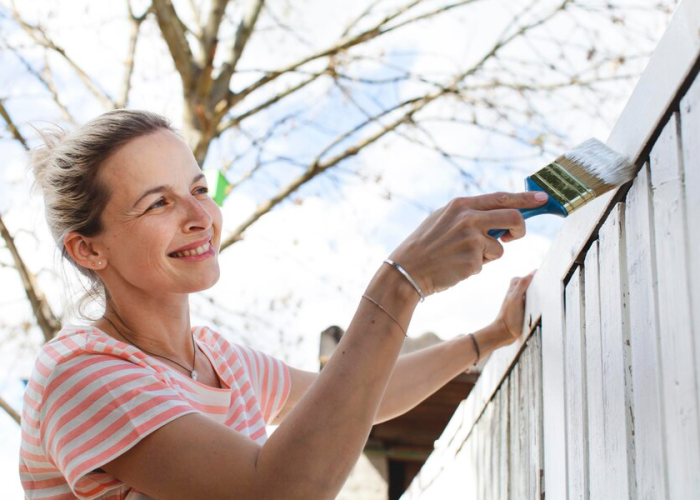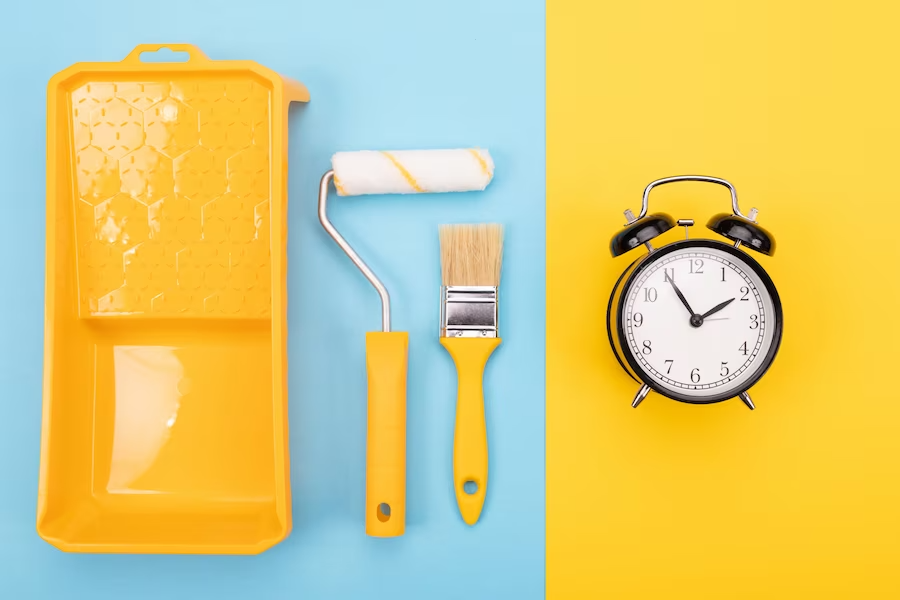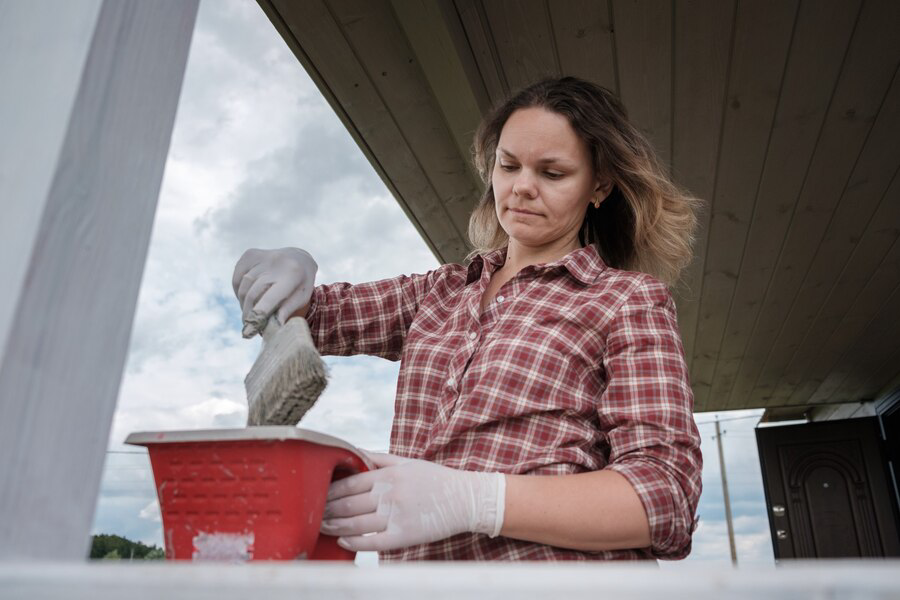Seasonal Factors to Consider When Painting the Exterior of Wethersfield
It’s time to consider a chore that’s sometimes disregarded: painting the outside of your Wethersfield house. As fall begins to fade and winter’s chill takes hold, paint job. Your painting project’s result may be greatly impacted by the numerous issues and considerations that occur with the change of the seasons. Understanding these seasonal variations is essential for an effective and long-lasting paint job, from the crisp fall air to the cold winter temps. Wethersfield exterior painting is complicated, and we’ll go into that in this blog piece, considering the special qualities that come with each season. Get ready to uncover the techniques for maintaining an attractive and sturdy home outside in any weather conditions.
Understanding How Seasonal Changes Affect Exterior Painting
Starting an exterior painting project will drastically improve the curb appeal of your house. But Wethersfield’s seasonal quirks play a crucial role in this project’s success. We explore the symphony of seasons and how their distinct qualities influence exterior painting talent in this investigation.

Temperature Matters
Picture this: you’re standing in the warmth of a Wethersfield summer or the crispness of a winter day. Both scenarios present challenges for exterior painting. Extreme temperatures, whether too hot or too cold, can affect the application and drying of paint. Ideally, the sweet spot lies in the moderate climate of spring and fall. These seasons offer the optimal temperature range, allowing the paint to adhere smoothly and dry evenly.
Humidity’s Impact
Wethersfield experiences a fluctuation in humidity levels throughout the year. High humidity, often prevalent in summer, can slow down the drying time of paint, leading to issues like sagging and poor adhesion. On the flip side, low humidity, common in winter, may cause the paint to dry too quickly, resulting in a finish that lacks uniformity. Balancing the humidity factor is crucial for achieving a flawless exterior paint job.
Rain and Moisture
Imagine attempting to paint a canvas in the midst of a rain shower – a disastrous scenario for any artist. The same principle applies to exterior painting in Wethersfield. Painting during the rainy season can lead to moisture-related problems, such as poor adhesion, bubbling, and an uneven finish. To avoid these pitfalls, it’s imperative to plan your painting project during drier periods.
Understanding the Importance of Timing
When painting the outside of a building, scheduling is crucial because it affects both the paint job’s longevity and efficacy. Selecting the appropriate time to start this process guarantees ideal circumstances for the paint to apply smoothly to the surfaces, forming a strong and weatherproof barrier. Ignoring seasonal factors can lead to early paint failure; the paint may bubble, peel, or fracture, leaving surfaces exposed to the elements. Painting under extreme heat or cold, for example, might affect the paint’s adhesion to surfaces and reduce its longevity. Additionally, painting the outside during a wet season could result in insufficient drying, which could lead to problems like the growth of mildew. By comprehending the complex dance between the local
Benefits of Seasonal Considerations

Enhanced Durability
One of the paramount advantages of aligning your exterior painting project with the seasons in Wethersfield is the substantial boost in durability. Properly timed painting takes into account the region’s unique climate challenges, safeguarding your home against the harsh elements it may face throughout the year. For instance, painting during the moderate temperatures of spring or fall allows the paint to adhere more effectively, forming a resilient barrier against temperature fluctuations, moisture, and UV rays.
Aesthetically Pleasing Results
Beyond the functional aspect of durability, seasonally mindful painting contributes significantly to the visual appeal of your home. Choosing the right time to paint ensures a smoother and more refined finish, creating an aesthetically pleasing facade that adds to your home’s overall curb appeal. The moderate temperatures during spring and fall facilitate optimal paint application, reducing the likelihood of issues like brush marks, streaks, or uneven drying, which can detract from the visual harmony of your home.
The Symbiosis of Durability and Aesthetics
What sets apart a well-executed exterior painting project in Wethersfield is the seamless integration of durability and aesthetics. When your paint job not only looks good but also withstands the rigors of the local climate, you achieve a harmonious balance that prolongs the lifespan of the exterior while keeping your home visually captivating.
What to Consider Before Picking Up the Brush
Carefully evaluating the current weather conditions is essential before starting any exterior painting projects. The choice of season is critical to the success of your painting project because it affects the paint’s adhesion and durability. Moderate temperatures are ideal because excessive heat or cold might interfere with the drying process and reduce the paint’s efficacy. Lower humidity is also better since too much moisture in the air can prevent paint from curing correctly, which can cause problems like peeling or blistering over time. Selecting a season with little to no precipitation is also necessary to avoid having rain or snow interfere with the application and drying processes. When you plan your painting project to coincide with good weather patterns, you not only improve the
Important Guidelines for Wethersfield Exterior Painting Success
Plan According to Season
Timing is everything when it comes to exterior painting. Wethersfield experiences diverse weather patterns throughout the year, making it essential to plan your painting project during the most favorable seasons – spring and fall. These periods offer moderate temperatures and lower humidity, creating optimal conditions for paint application and drying. Additionally, avoid painting during extreme weather conditions, such as the peak of summer or the depths of winter. High temperatures can cause the paint to dry too quickly, leading to uneven finishes, while freezing temperatures can affect paint adhesion.
Surface Preparation
The key to a successful paint job lies in thorough surface preparation. Start by cleaning the exterior surfaces to remove dirt, dust, and any mildew. Pressure washing is an effective method for cleaning, but ensure that the surfaces are completely dry before proceeding. Repair any damaged or deteriorating areas, such as peeling paint or rotting wood, to create a smooth and stable foundation for the new paint. Fill in cracks and holes with a quality exterior filler and sand the surfaces to create an even texture. Applying a primer is crucial, especially for bare wood or areas with extensive repairs. Primer enhances adhesion and ensures that the paint adheres uniformly across all surfaces.
Quality Paint Selection
Investing in high-quality, weather-resistant paints is a fundamental step in protecting your home’s exterior from Wethersfield’s climate challenges. Choose paints that are specifically formulated for exterior use and are resistant to fading, cracking, and mildew. Consider the type of finish as well. Satin or semi-gloss finishes are often recommended for exterior surfaces as they are easier to clean and more resistant to the effects of weathering. When selecting colors, keep in mind that lighter shades tend to reflect sunlight and heat, preventing the paint from fading as quickly. Darker colors, while aesthetically pleasing, may absorb more heat and be prone to fading over time.
The Importance of Proper Preparation
One cannot stress how crucial it is to prepare properly before starting an exterior paint job. It acts as the basis for an effective and long-lasting makeover of the exterior of your house. Giving the surfaces careful thought and attention before picking up the paintbrush is essential. First, give the outside a thorough cleaning to get rid of any dirt, filth, or loose particles that could interfere with the paint’s adhesion. Priming comes next, when the surfaces are spotless. In addition to producing a smooth canvas, using a premium primer guarantees that the paint will stick to the surface. When it comes to fixing any current problems, such peeling or cracked paint, this step is especially important. In addition to improving your home’s aesthetic appeal, taking care of these issues during the preparatory stage will greatly extend the life of the paint job. In addition to shielding the outside of your house from the weather and guaranteeing the painted surfaces’ enduring beauty, proper preparation sets the way for a faultless finish.
Conclusion
When starting exterior painting projects in Wethersfield, we at Victor Pro know how crucial it is to take the seasons into account. Our careful understanding of the particular difficulties presented by various seasons serves as a testament to our dedication to providing top-notch services. To guarantee the best paint application and longevity, we modify our method for every season, from the intense summer heat to the very cold winter months. Our staff is aware that the conditions that vary with the seasons might affect how long and vibrant the paint work lasts.
We guarantee our clients a durable and aesthetically pleasing finish all year round by using superior materials and weather-resistant processes. Victor Pro’s commitment to quality goes beyond just painting; it includes a thorough awareness of the surroundings in which we work, guaranteeing that our clients’ exteriors are safe and vivid all year long. To experience the Victor Pro difference in seasonal painting skills, call us at (860) 380-7030.




